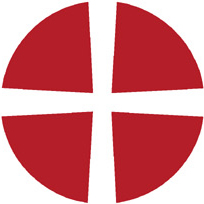Early History.
A short paper prepared by John Crocker in 1993
CAM
From John Wesley’s journal: On Friday 13th July 1739 John Wesley with George Whitefield is in Thombury where they spend the night. The following day, they set out for Gloucester. Wesley’s diary states that at 12.30 they are at Cambridge and ate before heading on towards Gloucester at 1.30. Nehemiah Curnock, the editor of Wesley’s Journal notes: ‘Cambridge Inn, a well known roadside house’.
(This was the only close reference to the Cam area I found in the records of John Wesley’s travels -J.C.)
Beginnings of Wesleyan Methodism in Cam
Rev Dr Adam Clarke (1760-1832), of Scottish parentage, though born in Ireland placed himself at the disposal of John Wesley in 1782. He became famed as a scholar, but notwithstanding his studious habits, he was a diligent pastor and efficient circuit minister. He was the President of Conference on three occasions, the first being 1806. Amongst his written works was a bible commentary which was read largely and widely by Methodists, and also circulated among the general public.
Rev William Jenkins was one time Superintendent minister of the Gloucester Circuit (1794-1797), whose energetic ministry saw to the enlargement of the Stroud, Acre Street, “round-house” in 1796. His mission activities in the area lead to the building of Wesleyan chapels at Bisley (1796) and Oakridge (1797). Mr Jenkins became the first superintendent of the Dursley Circuit in 1800.
In 1799, whilst Dr Adam Clarke and William Jenkins were serving in the Bristol Circuit, they visited Cam and preached. “Their preaching proved the power of God unto salvation”. (The Methodist Magazine 1827, p 632). This seems to be the beginning of Methodism in Cam, and this ties in with David Evans’ “Mad as a Hatter” who say around 1800 it is probable Wesleyan Methodism came to Cam. For some time, Evans states, the preaching room there was an attic in a cottage in the High Street on the Cam Pitch side of the Berkeley Arms Inn.
15 August 1818, William Underwood of the Parish of Cam, farrier, registered for dissenting worship “a messuage or tenement in the occupation of Ann Rodway, Widow”. William Underwood was one of the original trustees of Cam Wesleyan Chapel, so presumably this registration was for Wesleyan purposes. Similarly, the registered certificate for worship of 8 May, 1819 when Dennis Potter of the Parish of Cam registered a certain field belonging to Mr Samuel Holloway to be used as a temporary place of Worship. Both of these gentlemen are in the list of the original Wesleyan Trustees.
About a week before the Cam chapel was formally opened, on the 18 March 1826 William Homer, (Wesleyan Minister), Samuel Holloway, William Underwood, Thomas Hadley registered “a building for worship, erected near the corner of a parcel of ground called Rowley”.
On Friday 24 March, 1826, “a neat cahepl” was opened in Lower Cam for the use of Methodism, though interestingly it was opened by the Revs J Edmonson, MA and Griffiths, who were Independent Ministers. It was a double opening for on the Sunday the Revs Messrs Cubitt and Blackett were also involved.
Mr Thomas Hadley, one of those who registered the building for worship, who was a resident in the village, made a subscription of £147. 10/-, by far the largest in the total amount of £280 subscribed relating to the opening. In addition, collections amounted to £32. Mr Hadley’s generosity was also in evidence around the same time as he gave £20 towards the building of a house for the superintendent preacher.
